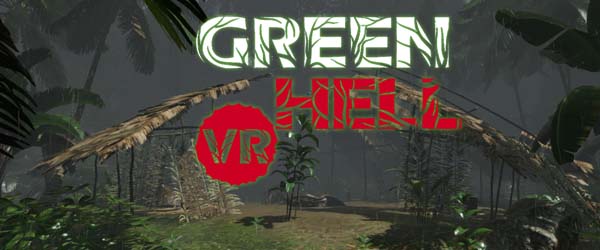
I always have mixed / complicated feelings about survival games. They always seem like a great idea in principle, and I feel like I would really enjoy them for their methodical gameplay oriented around problem-solving (which is one of the reasons I also love classic survival horror games). But when I actually play them, they are often annoying and frustrating, and I have a miserable time trying to learn how the game works.
I think a big part of the problem is that a lot of these games, being modest indie titles, don't have robust tutorials and aren't very good at communicating their gameplay mechanics to the player in an efficient manner. Even when they have tutorials, those tutorials feel like they barely scratch the surface of what the player needs to know. And then you're shoved out into the deep end, having to learn the rules of the game world and the controls for navigating it, while your precious food, water, and energy meters are all depleting. These games are insanely difficult in the early sessions because every new threat or challenge feels like an unfair "gotcha!" from the developers. Once I learn the systems (through lots of frustrating trial-and-error), I find that everything I need is readily available, and most of the fun and challenge of the game gets optimized away, leaving only the tedious chores.
Case in point, figuring out how to save the game in my first couple play sessions with Green Hell VR was a very aggravating experience. I don't recall the game ever telling me that saving requires building certain types of shelters. I assumed the game would autosave every time I slept, and possibly also every in-game day, or every 20 or 30 real-world minutes. So imagine my surprise when I slept, closed the game, and booted it up the next day to find that none of my progress from the previous session had been saved. No, sleeping in just any bed isn't enough to save the game in Green Hell. You need to craft one of 2 or 3 specific shelters, or at a specific landmark.
Saving the game can only be done at dedicated checkpoints, or at a crafted shelter.
Initially, crafting these shelters feels like a relatively daunting task. You need large sticks and palm leaves, both of which are too large and bulky to be stored in your backpack. Scavenging around for them can be time-consuming. They always seem to be everywhere as I'm walking through the jungle, but then nowhere to be found when I try to set up camp. It took me a while to figure out that I could get large sticks by cutting down certain trees, and that palm leaves could be easily cut off of palm trees. I was initially hesitant to use my sharp stones or basic axe to try cutting down these trees because the durability of these tools is so low. So I would wander around looking for loose logs and palm fronds to carry back to camp, all while my health and energy are slowly draining. Logs and leaves were the bane of my existence in the first few play sessions!
I don't have a problem with limiting the ability to save, nor do I have a problem with tying the save functionality to a resource. I've praised Resident Evil for doing those very same things. But Resident Evil at least very clearly explains how saving works, and gives the player an opportunity to save your progress right at the start of the game. The typewriter and an Ink Ribbon are right there in the first room of the game. Green Hell, on the other hand, requires playing through to a particular milestone before you find the first save point, which (depending on how you play) might be hours into the game.
[More]
6f7c7474-ac4b-410e-a7cc-4f2d0c7888d5|0|.0
Tags:Green Hell, Green Hell VR, VR, PSVR2, survival, jungle, Meta Quest 2, protein, carbs, fat, water, fire, animals, mushroom, hunt, crafting, amnesia, medicine, vaccine, anti-vaxxer
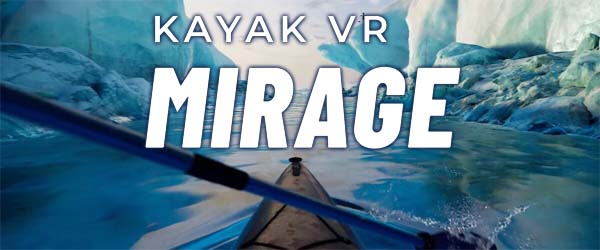
The PSVR2 set for the PlayStation 5 is a pretty neat piece of hardware. I bought one at release, and have been enjoying it a lot. I might even write a review for it after I've finished playing all of the launch titles that I've bought. The PSVR2 has a critical problem though: there aren't very many games for it. There weren't any high-profile AAA games that had VR compatibility except for Gran Turismo 7 and Resident Evil: Village, which were both already a year or 2 old when the PSVR2 released. Horizon: Call of the Mountain was a release title too, but it's more of a stand-alone expansion pack for Forbidden West than a full game.
Since it isn't backwards-compatible with PS4 VR games (even though the PS5 was heavily advertised as being fully backwards-compatible with PS4 games), the PSVR2 doesn't have the benefit of the established PSVR library. Hit titles like Star Wars: Squadrons, Resident Evil VII, or Déraciné sadly aren't playable on the PSVR2 (unless they get PS5 upgrades from the developers, which doesn't seem likely).
There is a silver lining though. This lack of titles may have been bad for the PSVR2 (and its initial sales figures), but it may have been a good thing for some of the smaller titles available on the platform. Those small titles had an opportunity to shine without there being any massive blockbusters to steal the spotlight or players' cash. One such small standout it a little virtual vacation game called Kayak VR: Mirage. After Gran Turismo 7 and Call of the Mountain, Kayak might be the premiere launch title for PSVR2 (even though it is also available on PC VR platforms, and has been for about a year).
The lack of any blockbuster PSVR2 launch titles allowed smaller games to shine in the spotlight.
Virtual vacation, without the sunburn!
Out of the gate, I was very impressed with how this game looks. I'm used to VR titles looking a little grainy and blurry (especially the original PSVR titles I played), but Kayak VR looks sharp as a crystal on the PSVR2! I'm sure it help that the game is only rendering relatively small environments without any people, and it doesn't have to do any complicated A.I. calculations or anything like that. Nevertheless, these exotic locales look absolutely gorgeous. This game is a textbook example of a "virtual vacation", as just sitting, taking a deep breath, and admiring the view is often just as good as the actual game. I can almost smell the salt in the air!
But there is an actual game here, and it's kind of a racing game, I guess? When you're done admiring the views, you can chose to play several races on each of the game's 4 maps. You won't be racing against actual people in real-time, however, as these races are all time-trials against ghosts of other players.
Races are time-trials against ghosts of other players.
Each race requires the player to navigate through a series of gates in a specific order. But these aren't your typical, hovering magic gates that you see in most video games. The gates are physical poles hanging from physical wires strung up throughout the map. If you hit one of the poles with your body, the kayak, or the oar, you'll be docked several seconds from your time as a penalty. These gates are pretty narrow, so completing these races requires some fairly precise handling and control of the kayak. It gets surprisingly difficult.
[More]
4d854981-611a-4aad-83c4-07b0e9f160fd|6|3.0
Tags:Kayak VR: Mirage, Better Than Life, PlayStation 5, VR, PS5, virtual reality, PSVR2, kayak, water, ocean, beach, race, exercise, nature, vacation, Costa Rica, Antarctica, Norway, Australia
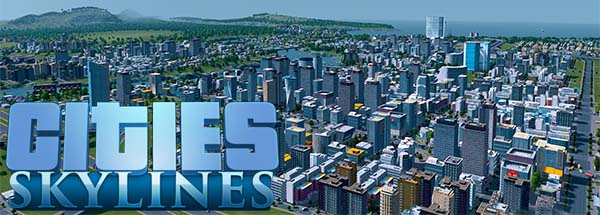
After the disappointment that was Cities: Skylines' Snowfall expansion, Colossal Order has tried to renew loyalty in the brand by offering free updates and a whole free DLC. Despite my disappointment with Snowfall, I still love Skylines, and I support its developer Colossal Order. They've shown a great deal of good will towards the consumers by offering their game at a budget price, and by continuing to provide exceptional post-release support, maintenance, and improvements to the core Cities: Skylines gameplay. One of the recent major updates added terraforming tools and the ability to create canals. There's also a free DLC called "Match Day", which adds the ability to build a soccer stadium and maintain your own team.
Its game day in the city!
"Couldn't you already build a soccer stadium?" you may ask. Well, yes you could. But now there's an additional soccer stadium (which is oddly much larger than the original soccer stadium), and you can inspect it in order to customize your team and set a handful of policies regarding them. If you team wins games (which happen annually in the game's calendar), then your city gets a large lump sum of reward money. You can increase the odds of winning by enacting the various policies. They include making public transit free on game day, hiring private security to keep the peace (you know, soccer hooligans), or [the much more expensive] option to enact a youth subsidy that recruits the best players from the community. Ticket prices are also adjustable, and affect both the income you earn from sales and the attendance and support of fans. You'll also need to provide adequate transit to and from the stadium in order to encourage visitors (including tourists) to attend the games.
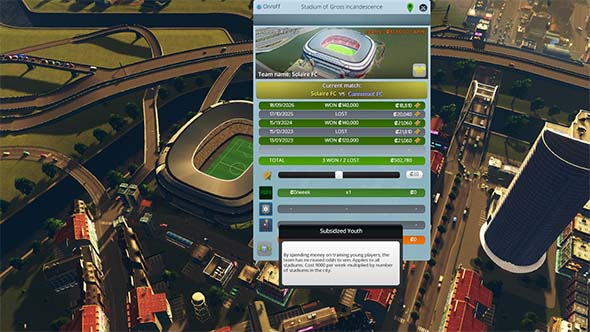
Your soccer stadium has some limited customization options.
Of course, you won't be getting a full-fledged soccer management game. You won't be managing a roster of players, setting depth charts, recruiting new players, or trading players with other teams. This is a city-building game, not EA Sports! I do wish that the stadium had more secondary color customization option in order to personalize it more. It would also be nice if there were multiple stadium architectures to chose from and multiple sports, but I guess we can leave that to the modders. The stadium that was already in the game is still present, but it does not function like the new stadium. I don't see any reason why they couldn't have moved that stadium into the new "Football" sub-category and make it function the same. Hopefully, it's easy enough to mod, say, a basketball arena that has the same policies attached to it. The Match Day DLC is free, so temper your expectations.
I'm kind of surprised that the devs keep adding stuff that generates more money for the city, since Skylines has always had the problem of money being a bit too easy to come by... [More]
ebb788e2-d9b1-4110-9e01-0119545caa95|0|.0
Tags:Cities: Skylines, Colossal Order Ltd., Paradox Interactive, Steam, city simulation, DLC, match day, sport, soccer, stadium, policies, terraforming, landscaping, canal, water

Normally, I try not to get excited about movie-tie in games. They have a very bad track record - with only a handful of exceptions. But this Mad Max game wasn't a direct movie adaptation, and it didn't release simultaneously with the movie, implying that it hopefully wasn't being rushed out the door to meet the movie's release. Warner Brothers Interactive had previously released Middle Earth: Shadow of Mordor, which was also sort of a tie-in to the Lord of the Rings and Hobbit movies, and that game was actually very exceptional! It had a novel and innovative concept around which the entire game revolved (making it very focused), and it was a very well-polished game that was immensely comfortable to control. So Warner Bros had earned some benefit of the doubt for its next game. I wasn't expecting Mad Max to match (let alone exceed) Shadow of Mordor, but I still had hopes that this one would turn out to be a well-realized game that could stand tall and proud as one of those rare, good movie tie-in games. After all, the concept of an open-world, post-apocalyptic action game about smashing spiky, nitrous-fueled cars into each certainly sounds like a solid premise for a game!
Well, not quite...
Wasteland chaos
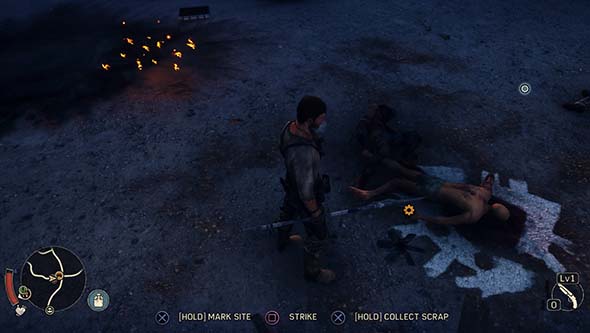
Many actions are overloaded to the X button - the game even displays conflicting prompts at times!
Virtually every interaction that I had with the game was either naggingly uncomfortable in some way or was prone to glitches. Even the basics of moving around and interacting with objects in the game world was a constant chore. When one button does everything; it does nothing (see my Assassin's Creed III review). Fortunately, a couple really important functions (like getting in and out of cars) were mapped to different buttons, but virtually everything else uses the X button. So if you're standing in front of a ladder and holding a weapon, it's a crapshoot whether the game will decide to let you climb the ladder or make you drop the weapon, and then it'll be a crap shoot whether the game lets you pick up the weapon again. Oh there's button-prompts to tell you what you can and can't do, but sometimes they outright conflict with one another. Besides, when you're running or fighting, then you're reacting on impulse and muscle memory rather than reading screen prompts. It doesn't help that the character's movement is very fidgety, so it's hard to position yourself properly when trying to interact with objects. I think the developers recognized this, which is probably why they make you have to hold the button for a second in order to perform most actions - to give you time to ask yourself "are you sure this is the action you want to do?".
Not enough space for vehicular combat
Clunky movement isn't limited to walking on foot. Steering vehicles is also very fidgety and floaty, and I found it very difficult to perform any precision maneuvering in the cars. The cars all tend to understeer at high speeds, but then strangely oversteer or fish-tail whenever you let off the gas. Trying to hit a ramp or knock down an enemy scarecrow or ram a sniper tower would often require multiple passes in order to succeed, and doing slaloms through the canyons resulted in a lot of cheap impacts. The rough terrain also leads to a lot of spin-outs. The vehicles feel so weightless and floaty that they can park on nearly vertical slopes, and running over a pebble can send the car hurtling and flipping 20 feet in the air. On a more personal note, I prefer my driving games to have cameras very close to the action, and so Mad Max's driving camera feels like it's a mile away from the action, which makes it harder for me to get a feel for precisely where the car is in relation to the environment. Virtually none of the game's vehicular set pieces really worked all that well for me due to these nagging control and scaling issues. If the map were bigger to accommodate multiple vehicles running side-by-side on a road, then dealing with the low-traction sand or the unlevel rocks wouldn't be so much of a consistent problem. Even having the option to zoom in the camera (an option that I couldn't find) would go along way towards helping me make more precise maneuvers.
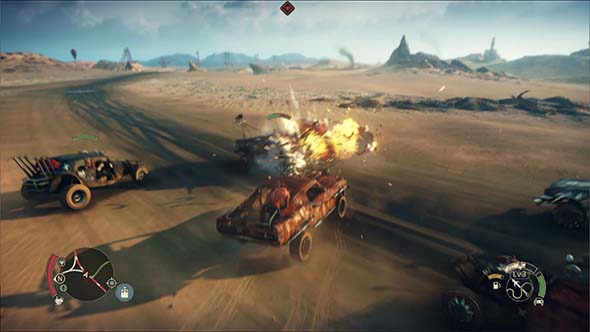
The primary gimmick of vehicular combat works fairly well in spite of the map not feeling big enough to support it.
This game really lives or dies based on how well the cars perform. The bulk of the game is played from within your car. You use the car to travel the world, and it's actually your primary weapon thanks to the game's novel vehicular combat. This vehicular combat would actually be really fun if the cars handled a bit better and were durable enough to actually take the beating that the combat entails... [More]
0acf283b-cb76-4ee2-80ba-14aaf6805d1e|0|.0
Tags:Mad Max, Max, Warner Brothers Interactive Entertainment, Avalanche Studios, vehicle, car, driving, combat, gasoline, water, wasteland, open world, sandbox, action, survival, fuel, food, post-apocalypse, nuclear war, Australia, Max Rockatansky, Chumbucket, Mad Max: Fury Road, movie tie-in, Achievement unlocked

I'm starting to feel like quite the prognosticator. Earlier this year, I started tossing around the idea of Nomadic civilizations for future Civ games. Around the same time, Creative Assembly announced Attila: Total War. They had apparently come up with almost the same idea independently at the same time. Well, now the teams at Firaxis have also implemented a variation of my idea for their new expansion to Beyond Earth, called Rising Tide.
This expansion seeks to remedy several of the core complaints with the Beyond Earth game. In my original review for Beyond Earth, my two biggest complaints were that the game and its leaders lacked the personality and variety of Civilization V, and that it just didn't feel futuristic enough. Both of these complaints ended up being the major focus of the first expansion, which definitely helps to make Beyond Earth stand out a little bit from its more realistic counterpart.
So we sailed up to the sun, till we found a sea of green
One of Beyond Earth's biggest failings was its lack of creativity in using its futuristic setting to innovate gameplay. The game felt very much like a reskin of Civ V rather than a new game. A big part of this was that the map posed many of the same sorts of restrictions on players that the Civ V map did: mountains, canyons, and oceans were all obstacles either impassable by units or uncolonizable by cities.
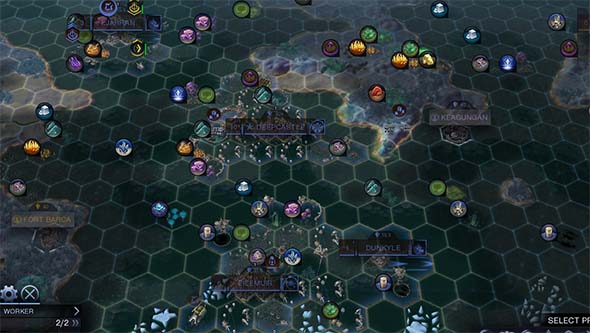
Aquatic cities and civilizations help to separate Beyond Earth's futuristic setting from Civilization's historical roots.
Well now one of those restrictions has been lifted, and civilizations can build floating cities in the oceans. Such cities can even be moved in order to claim new tiles or to act as mobile military bases. This opens up some interesting (and sometimes silly) new strategic possibilities, but the whole mechanic feels a bit contrived to me. Moveable cities is something that I think can work very well in Civilization, but I just don't feel that Firaxis gave us much reason to ever need to move cities in this game. My proposal for nomadic civilizations was two fold: such a faction could mobilize its entire civilization right up to an enemy's borders during war; and it could also move in response to changing map conditions (migrating animal resources or climate change) during peace. Beyond Earth hits that first point by turning cities into massive aircraft carriers, but there aren't any mechanics in place to make the map a factor.
Fish and other harvestable sea creatures don't migrate, and other resources don't move. So if you aren't using your aquatic cities as mobile military bases, then there's never any real need to move them. And if you're not playing as the North Sea Alliance faction, then the cost to move a city can feel prohibitively expensive. The people at Firaxis seemed to have recognized this, and so they made it so that aquatic cities don't grow their borders based on culture. Instead, you must either buy new tiles or move the city itself in order to acquire adjacent tiles. But since moving takes valuable production time away from the city, I rarely find myself moving a city, and instead I just buy any tiles that I want.
Aquatic cities can be moved, and can act as mobile military platforms and aircraft carriers.
There are other pros and cons to aquatic cities, such as health benefits, faster virtue acquisition, and more profitable trade routes. You can also move the cities around to temporarily acquire resources that allow you to build specific resource buildings, but at the cost of possibly temporarily hurting your city's growth or production (and maybe even starving the city if you move away from food-generating tiles). So there's a lot to think about when build an aquatic or nomadic civilization, but it all feels kind of like ad hoc mechanics in order to make the mechanic seem more meaningful than it actually is. That isn't to say that mobile cities is a bad feature in Beyond Earth. It's perfectly functional, and can be fun to play around with. It just feels a little gimmicky.
Just look at the world around you, right here on the ocean floor
It certainly helps that the oceans themselves are a much bigger part of the game. The ocean isn't just divided into coastal tiles and empty ocean anymore. There's a whole host of new aquatic resources, and even the sea floor itself has different features. This definitely provides some incentive and reward to building floating cities, since the ocean can be a rich source of resources. The ocean tiles themselves can even be improved with a variety of new improvements (including basic farms and mines).
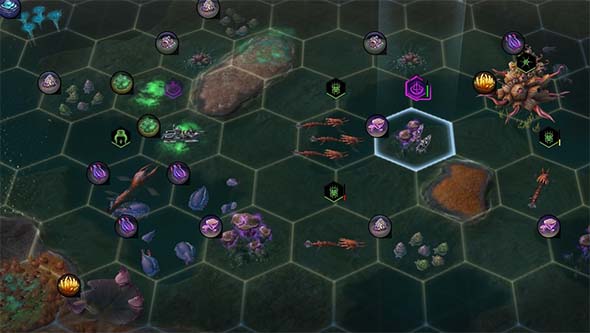
The oceans are alive with life and resources, giving reason to found aquatic cities.
Aliens are also active in the oceans. Sea creatures will build nests (just like their land counterparts), and there's a new alien creature called Hydrocoral that is stationary but which spreads across the ocean surface if left unchecked. Resource pods, artifacts, and quest triggers can all also be found in the ocean. So there's plenty to do in the water now, oceans feel more like a genuine part of the map rather than just dead space between continents, and the variety of features and resources in the ocean helps to make the world look more alien.
... [More]
da86c697-6def-4ade-b575-051869e1f38d|2|5.0
Tags:Sid Meier's Civilization, Civilization: Beyond Earth, Civilization: Beyond Earth: Rising Tide, Rising Tide, Firaxis, 2K Games, PC, Steam, strategy, grand strategy, turn-based strategy, science fiction, space, water, aquatic city, nomad, ocean, trench, submarine, diplomacy, affinity, alien, Civilization: Beyond Earth
|

| 12 | | | | | | | 60 | | 11 | | | | | | | 55 | | 10 | | | | | | | 50 | | 09 | | | | | | | 45 | | 08 | | | | | | | 40 | | 07 | | | | | | | 35 | | 06 | | | | | | | 30 | | 05 | | | | | | | 25 | | 04 | | | | | | | 20 | | 03 | | | | | | | 15 | | 02 | | | | | | | 10 | | 01 | | | | | | | 05 |
|